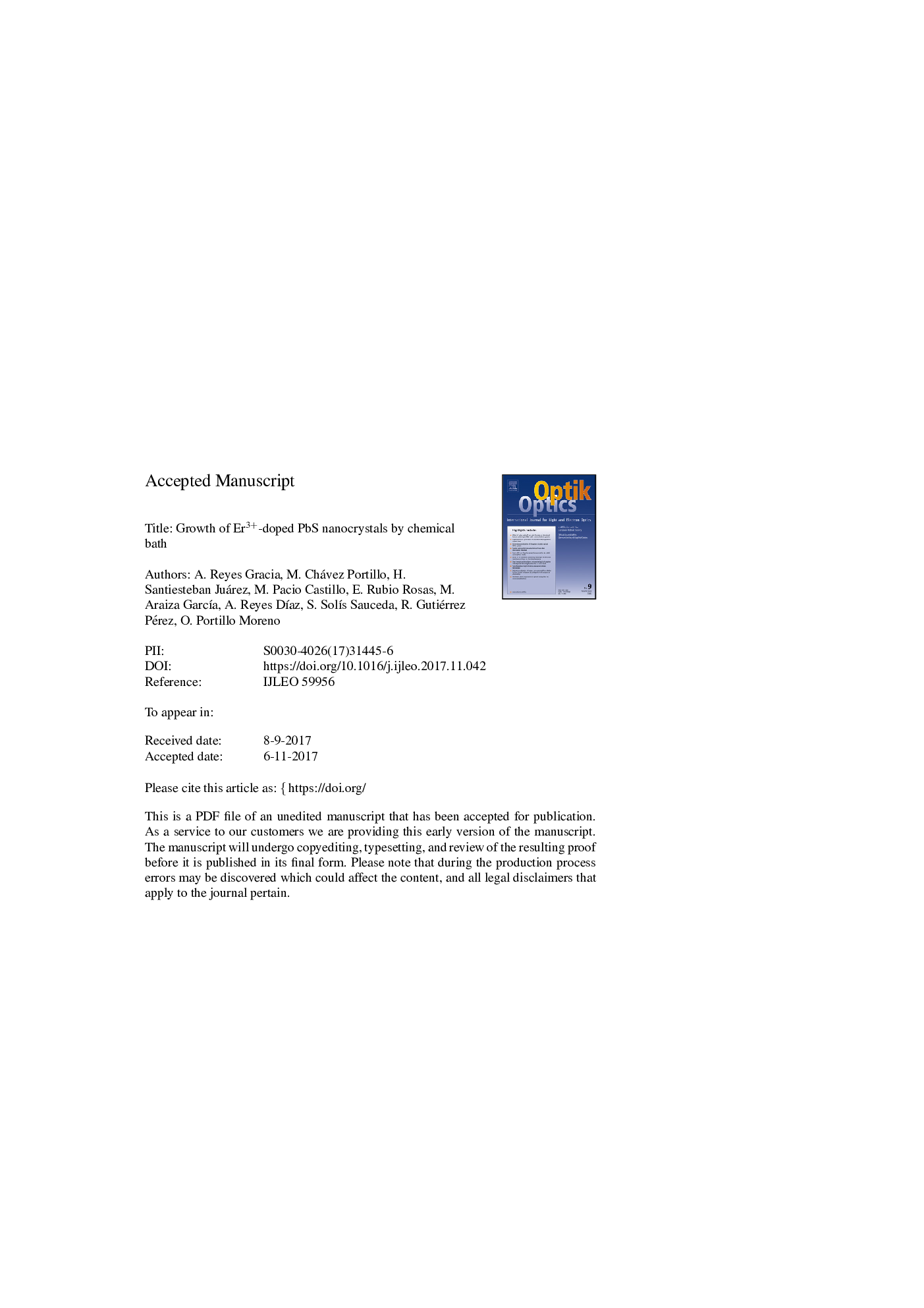| Article ID | Journal | Published Year | Pages | File Type |
|---|---|---|---|---|
| 7224914 | Optik - International Journal for Light and Electron Optics | 2018 | 30 Pages |
Abstract
The growth of Er3+-doped PbS thin films and the changes of structural, morphological, electrical and some optical properties were examined. The thicknesses of these films were found in the â¼200-120 nm range. The morphological properties of the nanocrystals were analyzed using Atomic Force Microscopy (AFM). FTIR spectra showed strong sharp absorption located at â¼1447 cmâ1 associated with the asymmetric stretching vibrations assigned to the bending out-plane vibrations of CO32â ions. X-ray diffraction displayed a cubic phase in all films and grain size (GS) was â¼6.5 nm for PbS, whereas for doped nanocrystals was â¼5.1 nm. Absorption bands located at â¼371 nm (â¼3.3 eV), â¼385 nm (â¼3.2 eV), 406 nm (â¼3.0 eV), â¼608 nm (â¼2.0 eV), â¼619 nm (â¼2.03 eV), â¼640 nm (â¼1.9 eV), and another intense band located at â¼682 nm (â¼1.8 eV) were observed. An optical absorption band located at â¼371 nm (â¼3.3 eV) was observed in doped films, corresponding to 4f â 4f transitions of Er3+ ions. The band gap energy of films showed a shift in the â¼1.49 eV for PbS and â¼2.25-2.58 eV for doped samples, respectively. The resistivity increased from â¼0.65 to 8.57 Ã 103 (Ω cm)â1, and the electrical conductivity decreases from â¼1.52 to 0.001 Ω m, mobility decreased from â¼29.6 to 0.13 cm2/Vs, and carrier increases from â¼1.9 Ã 1015 to 7.0 Ã 1015 cmâ3, while increasing V[Er3+]. As expected, doped samples showed better photosensitivity.
Related Topics
Physical Sciences and Engineering
Engineering
Engineering (General)
Authors
A. Reyes Gracia, M. Chávez Portillo, H. Santiesteban Juárez, M. Pacio Castillo, E. Rubio Rosas, M. Araiza GarcÃa, A. Reyes DÃaz, S. SolÃs Sauceda, R. Gutiérrez Pérez, O. Portillo Moreno,
